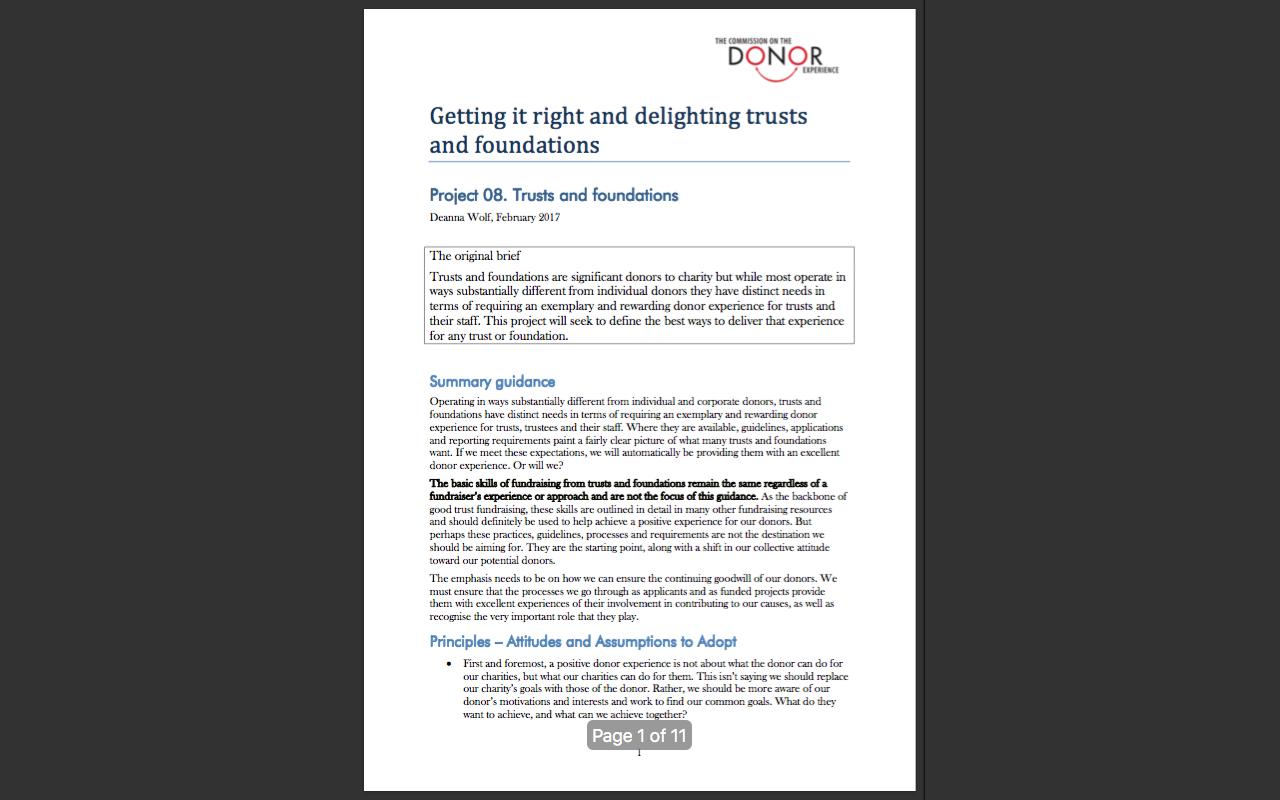CDE project 8 section 6: appendix 3 — methodology
- Written by
- The Commission on the Donor Experience
- Added
- April 24, 2017
Appendix 3: Methodology
I was approached to head the Trusts and Foundations project mid-June 2016 and spent the first several weeks working through how to tackle collecting input in order to develop this best practice approach. I am based in Scotland and was unable to attend the discussion events that would happen in various locations around the country. I therefore decided to solicit contributions virtually. My first foray was through a post on the Facebook Fundraising Chat page towards the end of June. This is a lively discussion page with just over 2,500 fundraisers (at the time) from a variety of sectors and specialities who seem to be mainly based in the UK. Unfortunately, my post [see below, #1] did not result in many responses – although it did serve to re-focus my direction.
After further discussion with some other members of the Commission both online and at the Institute of Fundraising’s National Convention in early July and then over the summer, I set out a hypothesis and requested opinions, reactions and contributions through a number of sources including:
- Emailing trust fundraisers through the trust_fundraising@yahoo group reaching potentially thousands of trust fundraisers in the UK and beyond;
- Emailing Commission of the Donor Experience enthusiasts; and
- Posting a blog in UK Fundraising, requesting feedback.
From these contacts I received:
- Email submissions from 15 fundraisers (ranging from those new to the profession to those who have been in it for 20 years or more and have been recognised at the highest levels for their contributions to charity fundraising); and
- Research results provided by the Institute of Fundraising North East Funders Forum project carried out in 2016 (including a survey to fundraisers as well as a discussion group comprised of 2 North East funders, CEOs and fundraisers representing organisations across the sector and of varying sizes, local authorities and the CVS). The project was supported by The Ballinger Charitable Trust and Lloyds Bank Foundation.
I also discussed and requested assistance from a legal contact in a major legal firm in Edinburgh who works with many trusts, and contacted the Association of Charitable Foundations (ACF) for a response to my proposition (echoed in my blog). The ACF represents over 300 members, comprised of trusts, foundations and independent funders located across the UK. They include family trusts, corporate foundations, livery companies, and broadcast appeals that range in size from small and local grant-makers to some the world’s largest foundations. They provided a response and suggested I consult nfpSynergy’s two reports on grant fundraising 1) Inside the mind of a grant-maker: Useful stuff on how grant-making works (June 2013); and 2) Taking nothing for granted: A research report into what charities think a model grant-maker looks like (June 2012).
I bring over 14 years’ personal experience raising income from statutory, lottery and charitable organisations in Canada, the United States, England and Scotland and gathered from my involvement as a Member, Committee Member, Officer and Chair with the Institute of Fundraising Scotland’s Special Interest Group for Trusts, Statutory and Foundations.
The contributions and dialogues collected over the last few months have resulted in this discussion of best practice with regard to how trust and foundation donors should be experiencing their involvement in our fundraising efforts.


















